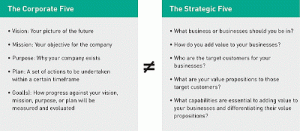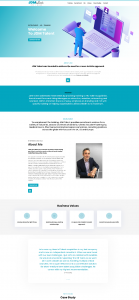Money makes the world go ’round, and is an irreplaceable part of all business. You can’t make a product, pay employees, or keep the lights on without capital.
Crowdfunding is one of the numerous methods to acquire enough capital to get your idea off the ground. It’s especially useful – using either Kickstarter or Indiegogo – to launch a tech product, novel gadget, or other consumer focused product.
However, it’s not something you can succeed at without careful planning and strategy.
Here are six things you should consider as you raise money on Indiegogo or Kickstarter with crowdfunding:
1. Create Rewards to Entice Your Indigogo and Kickstarter Backers
The output of the campaign can’t be any old product or offering.
To draw in backers, you must offer something that is unique or special, something that justifies attention from people.
Additionally, you must offer milestone benefits. Technology focused crowdfunding campaigns, for example, offer beta access to backers who contribute above a certain amount; you can incentivize various reward tiers to unlock product features.
Think of things to offer people to make it worth their time and money, like T-shirts, early access to prototypes, or even credit and thanks on your website.
2. Use Facts, Figures, and Visuals in Your Crowdfunding Promotions
No smart consumer will put money into your product without getting as much information as possible.
It’s your responsibility to provide your backers as much detailed product information as possible to ensure that your campaign is a success.
The information must prove that the idea is sound and that you are credible. You will also want to promote this information, as well as the crowdfunding itself, across multiple social platforms.
Photos, for example, can make your product seem more real to the average consumer.
Testimonials from people who’ve tried samples of your offering, or have had the opportunity to experience the product’s prototype can serve as social proof, improving your credibility.
3. Leverage Your Brand Story to Connect With Backers
Stories make your crowdfunding effort more successful.
A cold brand inspires doubt from savvy consumers. The story behind your company can make your brand warm and relatable.
However, simply telling the story isn’t enough. You need to phrase it properly and make sure that it delivers the message properly. It also needs to be short and succinct.
The longer it is, the more likely it is for people to lose interest.
Telling your story in a compelling way that highlights what led to the product idea and why it needs to exist in the world is the tried and true practice that nearly all successful crowdfunding campaigns on both Kickstarter and Indiegogo have in common.
4. Strike a Balance Between Professional and Personal, and Remember Crowdfunding is about Community
When a company goes crowdfunding, it needs to take care in how they present themselves.
Too businesslike, and people will shy away. Too emotional and personal, and it will seem fake. Striking that balance is a difficult task.
The backers of crowdfunding campaigns tend to be a fanatical community that loves what crowdfunding platforms have enabled but value authenticity more than most audiences.
Generally speaking, you want your tone to be relaxed, while your wording should be specific. A light tone will embody the emotion of your message, while clean and technical wording will establish your credibility.
Whatever you do, make sure you take part in others campaigns, spend some time on some crowdfunding forums so you have a feel for the audiences that participate in crowdfunding.
Some examples include:
5. Crowdfunding Credibility: Can You Deliver the Product You Promise
The success of a crowdfunding campaign can come down to your image and brand.
The stronger your existing reputation before you begin your campaign, the stronger the initial wave of interest will be. The start of your campaign should include a strong media campaign to both promote and improve your image.
This initiative should also include deciding which social media networks your company will focus on.
You and your company will need to do a lot of market research to find out where your target audience hangs out. Additionally, you will need to research which influencers would be most relevant to both your offering and your market.
6. Make a Detailed Plan: Prototyping to Crowdfunding Fulfillment
Crowdfunding isn’t meant to last forever. You’ll need to set an end date, which means planning things out. You need a plan that generates interest, milestones that reward donation levels, as well as a marketing campaign that gets the ball rolling.
You should also plan out how long you want the campaign to last. It should be long enough to allow for enough donations to come in, but not so long that you start losing money.
And, don’t overlook your crowdfunding fulfillment from the outset – before the launch of your campaign.
One of the biggest surprises for first-time crowdfunders is the complexity and cost involved in shipping your rewards to backers. This simple, yet potentially expensive oversight, has cost the goodwill many crowdfunders had built up during their successful campaign.
Wrapping Up: Ingredients of a Successful Crowdfunding Campaign
Running a crowdfunding campaign can get a product rolling, but only if it’s done properly.
It should also only be done if it’s the best or only way for your idea to come to life.
A failed crowdfunding campaign can have long-reaching consequences, such as souring future investors to your idea, so consider it carefully before committing to it.
This article originally appeared on Fulfillment Bridge and has been republished with permission.
Business & Finance Articles on Business 2 Community
(182)
Report Post




